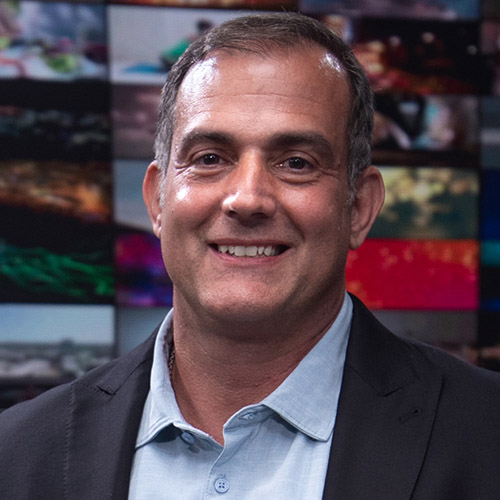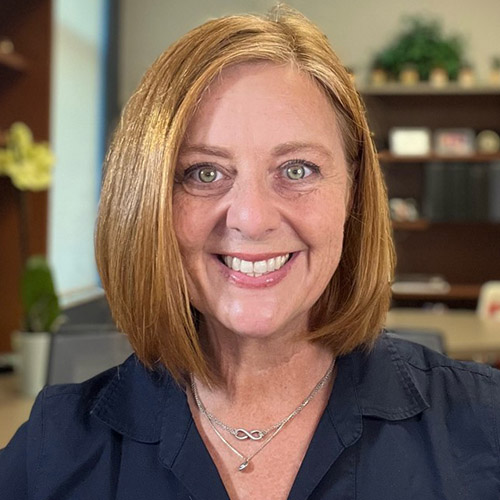
Florida Atlantic University’s School of Communication & Multimedia Studies in Boca Raton, FL, is home to a new virtual production studio designed to develop the next generation of media and entertainment professionals. BrandStar, an integrated production and strategic marketing company headquartered in nearby Deerfield Beach, FL, donated and deployed an LED Volume Wall along with ICVFX (in-camera virtual production) systems driven by Unreal Engine 3D graphics and gaming software into a retrofitted television studio in the university’s Dorothy L. Schmidt College of Arts & Letters.
The new facility, which opened in March, bears the name BrandStar Studios @ Florida Atlantic. In conjunction with the technology donation, BrandStar is providing advisory and training services to FAU staff and faculty, as well as internship and mentorship opportunities for students.
[Editorial: Take a Look at the New AI 'Me']
Carol Bishop Mills, Ph.D., director of FAU’s School of Communication & Multimedia Studies, explained that the department has three main degree tracks: Communications Studies, Film and Media, and Multimedia Journalism. The school also offers courses in animation and gaming, sports broadcasting, and public relations. Initially, the facility will house FAU’s students in animation, film, gaming, and media. However, as the school’s programs evolve, Mills said other departments—such as sports broadcasting and even theater—will be able to take advantage of the technology.
BrandStar Studios @ Florida Atlantic also has the potential to become a revenue generator for the university by offering virtual production services to businesses and organizations in the community. This would not only allow the school to assist its students financially, but it also affords them the opportunity to gain some real-world production experience. “If our students can do this and get paid to do it—and then have the rest of the revenue go back into things like scholarship money—that will be incredible because part of our mission is ensuring that we can support our students,” Mills said.
Under Development
As an integrated production and strategic marketing company, BrandStar’s roster of offerings are similar to a full-service advertising agency, but "with a twist," as its marketing literature declares. Through its partnership with Lifetime, it has six original television series including The Balancing Act, a morning show co-hosted by Montel Williams and Olga Villaverde that is in its 20th season; home improvement show Designing Spaces; and Military Makeover, a home renovation show focused on veterans (also hosted by Williams). The company also executes advertising and marketing projects for clients such as Amazon, Ford, Google, The Home Depot, Toyota, Walmart, and many others.

“The hub of that is production,” explained Mark Alfieri, BrandStar founder and CEO. “We’re always thinking about what are the greatest and latest technologies and advancements in storytelling that we can leverage to tell amazing stories and do amazing productions—and do that in a highly cost-efficient way?”
The firm has five studios throughout southern Florida, including one at Lynn University in Boca Raton and another in Miami, through a partnership with broadcasting and production company Mediapro. Alfieri said the main driver behind BrandStar’s donation to FAU is a combination of community and new talent development.
“What I’ve noticed over the last couple of decades is you have a lot of awesome schools here in South Florida. People go to school here, and then in order to get work—especially in the entertainment and production space—they have to go to California or New York,” Alfieri explained. “They’re training them and then shipping them out. That’s not great for Florida.”
Through its partnerships with higher education institutions, BrandStar can contribute to keeping production talent in the state while simultaneously developing its own pipeline of employees. The company has a significant year-round internship program, and many interns continue on as full-time employees once they’ve graduated.
“If we get a chance to train them and develop them while they’re going to school, they’re fully equipped in a practical, experiential work environment—they actually see [the technology] at play,” Alfieri added. “[It creates] a competitive advantage, not only for ourselves but for these students.”
Mixed Reality
Like many production professionals, Alfieri first became interested in virtual production after watching The Mandalorian. The prospect of being able to shoot without having to invest in filming on location presented a more creative, cost-effective way to approach production. He began researching how he could incorporate this tech into BrandStar’s facilities.
After running the numbers, Alfieri decided that it made more sense for his company to build its own LED Volume Wall. Leveraging his relationships with other production veterans, they visited the factory in China that eventually constructed the wall.
“Our first wall was 1.9mm,” he recalled. “That allowed us to stand within six feet of the wall—because we didn’t have a big stage—and still get photorealism.”
For in-camera motion tracking, BrandStar partnered with London-based virtual production technology developer Mo-Sys. "They built a plug-in for the Unreal Engine software, so the gaming engine is connected to the motion tracking,” Alfieri explained. “Then that software connects to what we call a Brain Bar that has the Unreal Engine up, the wall up, and connects the physical cameras that we’re filming with, with the virtual cameras in Unreal Engine.”
Each camera lens, both physical and virtual, is matched to create a three-dimensional perspective. At the same time, the technology will accommodate real scenic elements or props, such as physical chairs.
“It’s a mixed reality set, which means that you’re going to have props in the midground, behind you, in front of you, and on the wall,” Alfieri said. “But you’re able to digitize and match the physical props to the Unreal Engine props so you get an identical match.”
[Editorial: Back to the Classroom]
Unreal Engine also provides a library of environments that artists can customize. BrandStar has its own visual arts department that will build environments from scratch, but Alfieri said sometimes you just "grab something and customize it, and now it’s original to you."
New Workflows
For BrandStar Studios @ Florida Atlantic, BrandStar has applied a similar approach as it did to its first virtual production space by having an LED Volume Wall custom-manufactured and integrating it with the necessary support technology. With this technology, students learn virtual production workflows, which are considerably different to traditional production.
For example, instead of fixing issues in post, virtual production enables the post-production team to make adjustments while shooting. “It becomes much more of a collaboration between production and post-production,” Alfieri said. “By the time you’ve got it to the finishing team you’re doing color correction and maybe putting some additional graphics in, and then you’re ready to ship it out.”

For a project like this to succeed, Mills emphasized the need for staff and faculty to make the effort to learn the technology well enough to be able to teach it to students. “It is a significant time and skill investment for faculty or staff,” she said. “You have to know that they are committed, because if you don’t, then that equipment is just going to sit there and never get used.”
Mills relays that partnerships like the one FAU enjoys with BrandStar enable both higher education institutions and employers to better develop the next generation of professionals, one that is ready to hit the ground running straight out of school. “Universities—especially state universities now—are very interested in these public/private partnerships because it provides them with the resources they would not otherwise have on limited state budgets,” she explained. “I think that’s a real win-win for everybody. And if you handle it in a really ethical, engaged way, it can be a wonderful partnership.”







